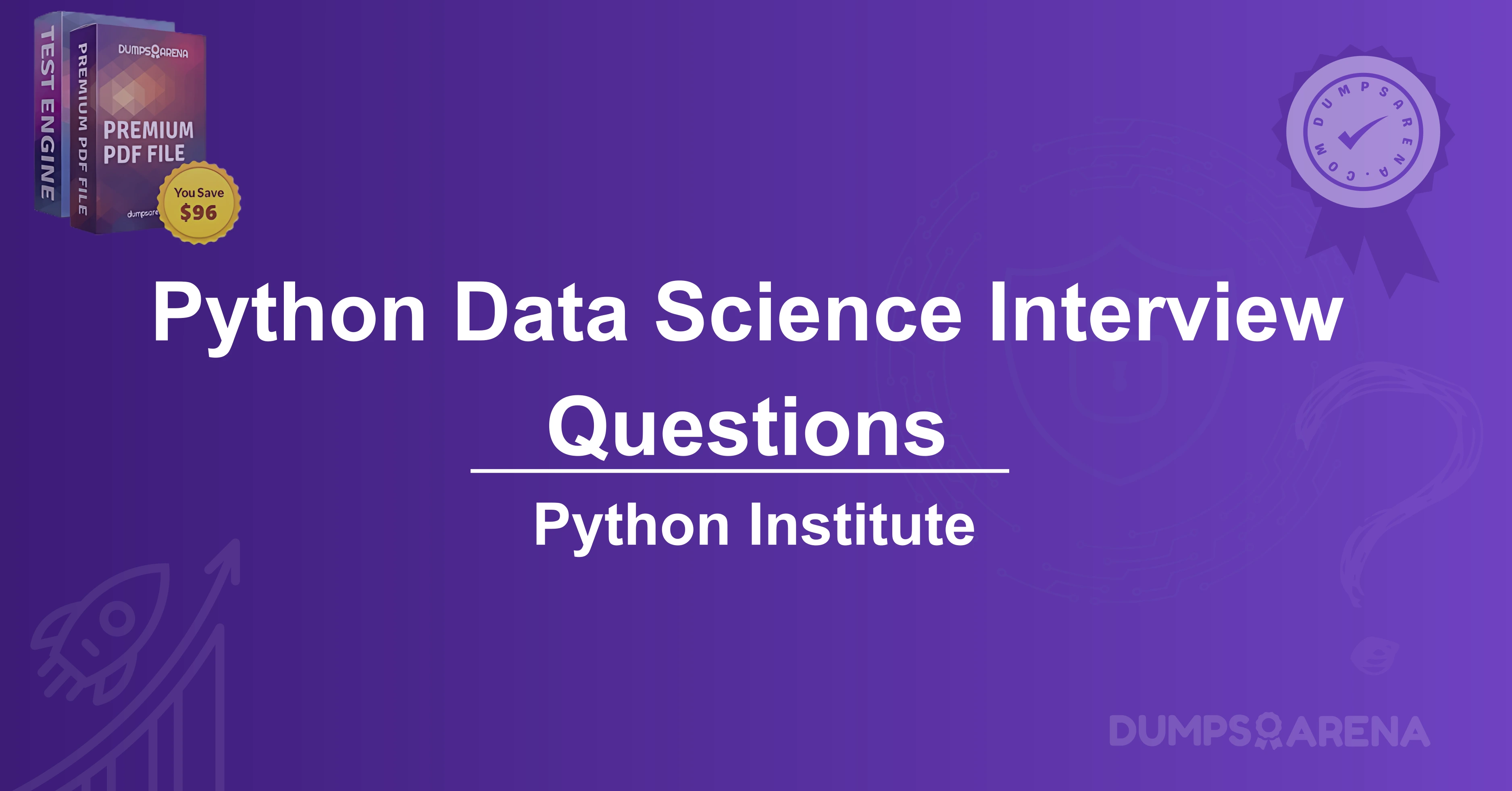Python Data Science Interview Questions: From Beginner to Pro
Introduction
The Python Data Science Interview Questions and Answers PDF is a comprehensive resource designed to help you excel in your next data science interview. This guide covers essential topics such as data preprocessing, machine learning algorithms, and data visualization. It also includes sample questions and answers to help you prepare effectively. By following this guide, you can boost your confidence and increase your chances of landing your dream data science job.
Why Python is Essential for Data Science?
Python is one of the most popular programming languages in data science due to its versatility and ease of use. It is widely used for tasks such as data preprocessing, analysis, machine learning, and visualization.
Key Advantages of Python for Data Science:
1. Rich Ecosystem: Python offers a vast library of open-source tools and packages, such as NumPy, Pandas, and Scikit-learn, which simplify tasks like data cleaning, analysis, and model building.
2. Ease of Learning: Python’s simple syntax makes it beginner-friendly, enabling newcomers to quickly grasp its fundamentals.
3. Scalability: Python can handle large datasets and perform complex computations efficiently, making it suitable for advanced data science tasks.
4. Machine Learning and Visualization: Libraries like TensorFlow, Matplotlib, and Seaborn make it easy to build machine learning models and create insightful visualizations.
Overall, Python’s versatility, power, and extensive ecosystem make it an ideal choice for data science professionals.
The Importance of Interview Preparation
Preparing for Python Data Science Interview Questions is crucial, especially given the competitive nature of the field. Here’s how you can stand out:
1. Research the Company and Role: Understand the company’s culture, job requirements, and industry trends.
2. Practice Common Questions: Use online resources and books to practice answering typical interview questions.
3. Dress Professionally and Be Punctual: First impressions matter, so dress appropriately and arrive on time.
By following these steps, you can demonstrate your readiness and commitment to the role.
Basic Python Questions
These questions test your foundational knowledge of Python. Topics include data types, variables, operators, and control flow.
Examples:
- What are the different data types in Python?
- How do you declare a variable in Python?
- What is the difference between a list and a tuple?
- How do you iterate over a list in Python?
- What is the purpose of the `if` statement in Python?
Tips for Answering:
- Be clear and concise.
- Use correct Python syntax.
- Provide detailed explanations.
- Ask for clarification if unsure.
Python Data Science Interview Questions
These questions assess your ability to apply Python in data science contexts. Topics include data preprocessing, machine learning, and visualization.
Examples:
- How do you preprocess data in Python?
- What machine learning algorithms are available in Python?
- How do you visualize data using Python libraries?
- What are the key Python libraries for data science?
- How do you build a machine-learning model in Python?
Tips for Answering:
- Familiarize yourself with Python’s data science libraries.
- Understand machine learning algorithms and their applications.
- Be prepared to discuss your experience with data science projects.
Key Features of Python
Python is a high-level, general-purpose programming language known for its simplicity and versatility. Key features include:
- Ease of Use: Python’s intuitive syntax makes it easy to learn and use.
- Versatility: It supports a wide range of applications, from web development to machine learning.
- Rich Data Structures: Python offers lists, tuples, dictionaries, and sets for efficient data handling.
- Machine Learning and Visualization: Libraries like Scikit-learn and Matplotlib simplify complex tasks.
Python Lists vs. Tuples
Both lists and tuples store collections of data, but they differ in mutability:
- Lists: Mutable (can be modified after creation). Created using square brackets `[]`.
- Tuples: Immutable (cannot be modified after creation). Created using parentheses `()`.
Example:
```python
months_list = ["January", "February", "March"]
months_tuple = ("January", "February", "March")
Lists are ideal for dynamic data, while tuples are better for fixed data.
Handling Missing Values in Datasets
Missing values are common in data science. Common approaches include:
1. Dropping Missing Values: Remove rows or columns with missing data.
2. Imputation: Replace missing values with the mean, median, or mode.
3. Creating Indicators: Add a new feature to flag missing values.
Example:
```python
import pandas as PD
df = pd.DataFrame({'column_name': [1, 2, np.nan, 4, 5]})
df['column_name'].fillna(df['column_name'].mean(), inplace=True)
Machine Learning and Statistical Questions
These questions test your knowledge of machine learning and statistics. Topics include:
- Supervised vs. unsupervised learning
- Regression and classification
- Model evaluation techniques
- Statistical hypothesis testing
Examples:
- What is the difference between supervised and unsupervised learning?
- How do you evaluate a machine learning model?
- What is the null hypothesis in statistical testing?
Advanced Python and Coding Challenges
These questions assess your advanced Python skills and problem-solving abilities. Topics include:
- Object-oriented programming
- Data structures and algorithms
- Code optimization
Examples:
- Implement a binary search tree in Python.
- Write a function to find the longest common subsequence of two strings.
- Optimize a recursive factorial function.
Conclusion
This guide provides a roadmap to help you prepare for Python data science interviews. By mastering the concepts and practicing the questions outlined here, you can confidently tackle your next interview. Additionally, ensure you have a strong grasp of data science fundamentals and can demonstrate your Python skills effectively.
Good luck with your preparation and interview!




